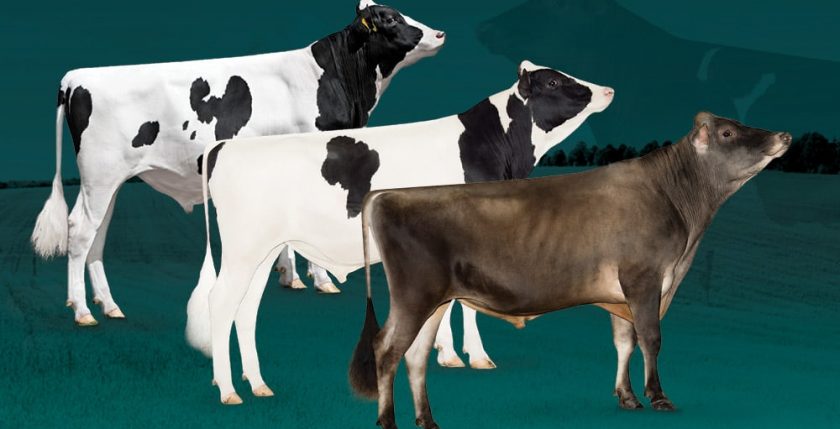Does the idea of picking sires for your herd make your head spin? Let Scott Carson, GENEX Director of Strategic Accounts provide you some guidance!
In 1989, right after graduating from college, one of my favorite tasks on my family’s Holstein farm was choosing the bulls that would sire our next generation of cows. At that time, I handpicked a few bulls at each proof run that I expected to use in our genetic program for years.
A few years later, I was operating my own Jersey farm where I used “young sires” for clean-up and my young sire daughters were typically sold to expanding dairies in Texas, California or Oregon. I seldom regretted selling daughters of bulls that rarely emerged as active, progeny-proven sires.

My how times have changed! The arrival of genomic evaluations in January 2009 dramatically changed genetic strategies on farms of all sizes. Improvement in economic traits began accelerating at a rate never seen before!
Along with the rapid acceleration of genetic improvement, we also face challenges that were not present before genomics. New, high-ranking bulls are activated throughout the industry at each official sire summary, and A.I. companies are frequently activating new sires between summaries. If a continuous replenishment of high-ranking sires isn’t enough to make your head spin, the USDA is routinely adding new traits that are economically impactful and heritable. The final complicating factor is that frequently the highest ranked and most coveted sires are also the youngest bulls, so there is a biological limit to how much semen can be produced. Therefore, it’s not possible for dairy farmers to acquire all the semen they need from a short list of hand-picked sires that meet strict thresholds for a large number of traits.
In short, here's the situation:
– We have the opportunity for rapid genetic progress but an ever-changing group of bulls,
– a growing list of traits to consider,
– and uncertain availability of semen from any one specific bull.
So, how do you build a strategy to account for these variables?
First, identify what you are really trying to achieve through genetics. Your answer is probably to improve efficiency and profitability. The best path to achieve that goal is direct selection for profitability, not just breeding for higher yield. Multi-trait indexes that combine economically impactful yield and health traits allow you to use sires that transmit profitability by many different paths. If you reduce or remove arbitrary thresholds on individual traits, then the number of sires available increases significantly.

I’m often asked if it would be better to select for a few specific traits in order to maximize progress in those traits. It’s true that doing so maximizes genetic progress in those specific traits, but when you remove specific trait thresholds and choose sires by a multi-trait index like ICC™ or NM$ you are only selecting for one thing – profitability. Another option is to build a custom index that targets specific traits in the best ratio for your specific circumstances. If opting for a custom index, work with your genetic consultant to define the traits and trait ratios that translate to profitability in your unique situation.
Is there a time when a strict cut-off level for a trait is useful? I am comfortable with a strict cut-off on Sire Calving Ease (SCE), since a hard calving has such a catastrophic impact on the future of the individual cow. However, a strict cut-off on a specific health trait might eliminate a bull that transmits exceptional yield. Conversely, a strict yield cut-off might remove a bull that transmits high profitability through healthy, long-lasting daughters. In other words, there are many ways to maximize efficiency and profitability.
Now that you’ve simplified your selection criteria, how do you choose a group of bulls? My advice is to not pick too narrow a group of bulls. The reason is semen availability is too uncertain, and new, high-quality bulls become available too frequently. Instead, define a genetic average – like an average ICC™ – and choose a pool of bulls that meet the average.
How many bulls should you choose? When choosing bulls with only genomic evaluations, we know their reliabilities are around 70%, and therefore their evaluations will change over time. Research published in the Journal of Dairy Science shows that the more genomic bulls included in a gene pool, the more reliable the average of their evaluations becomes.¹ For example, the average genetic ability of a gene pool of at least 12 sires will have a reliability of 98%. That’s comparable to a single progeny-proven bull with hundreds of milking daughters.
As for genetic level, you don’t need a truncation point, a cut-off; you only need a target. If you use many bulls that average to your target, you can be confident that the milking cows that result three years down the road will hit that target.
A simple genetic target and a commitment to utilize many sires will, in turn, lead to the acquisition of adequate volumes of semen. If one bull among your list should become unavailable, simply insert a replacement that keeps the genetic average on target.
It’s a simple recipe: Let go of the traditional approach to bull picking; those days are over. Stop worrying about a laundry list of specific traits. Stop worrying about how to incorporate new traits into your bull picking approach.
Instead, identify a simple genetic target and allow a group of exceptional bulls to sweep you to that target. Define how frequently the target will be updated. You should routinely raise your sites and expect continuous and rapid genetic improvement. Let the genomic wave carry your herd to new heights.

- Abdollahi-Arpanahi, Rostam, et al. “Predicting Bull Fertility Using Genomic Data and Biological Information.” Journal of Dairy Science, vol. 100, no. 12, 2017, pp. 9656–9666., doi:10.3168/jds.2017-13288.


